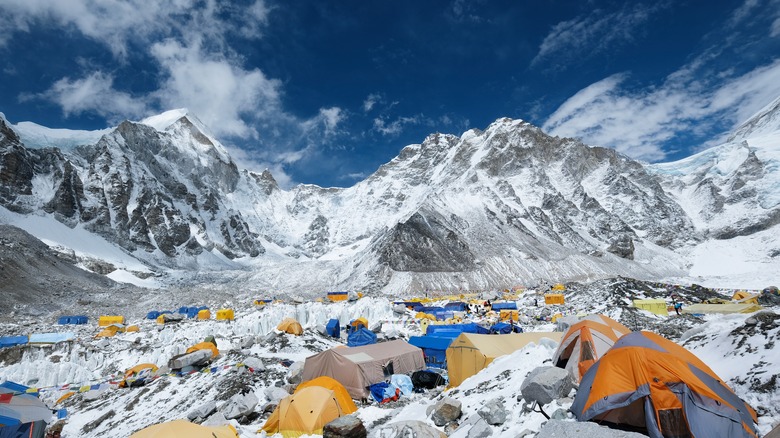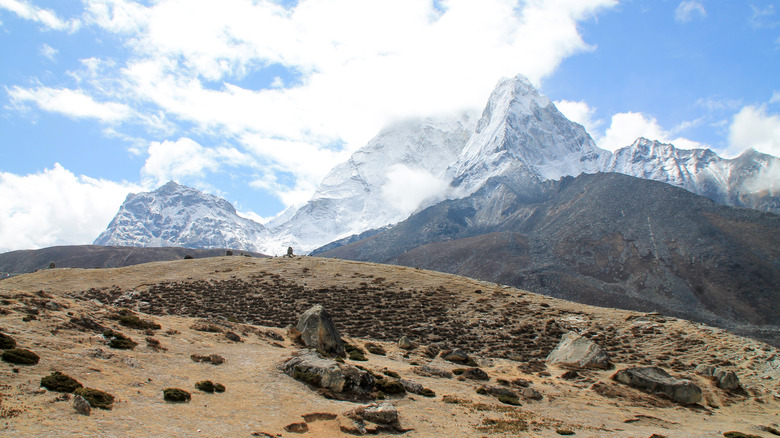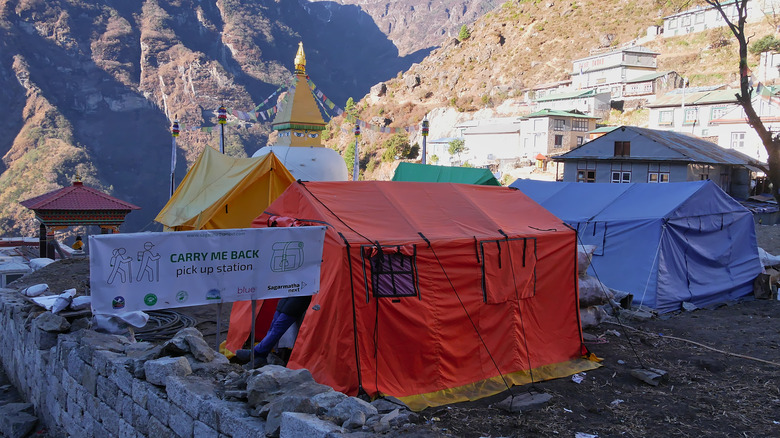The Unsettling Poop Problem Of Mount Everest
Mount Everest has a poop problem. Well, not the mountain itself — obviously — but rather, the people climbing the mountain have caused a poop problem. Each year, hundreds of climbers attempt to scale its 29,029-foot summit in an effort to conquer one of the most difficult feats on Earth, the tallest mountain. However, as the number of climbers has increased exponentially over the years, so too has an unsettling and increasingly pressing issue: human waste.
@vakitamedia En seulement quelques années, l'Everest est devenu la poubelle la plus haute du monde... Les 35 000 alpinistes qui viennent chaque année dans la zone y abandonnent de nombreux déchets dont des bonbonnes de gaz, des cordes, des tentes, des conserves et de nombreux plastiques.
Mount Everest's climbing season, typically running from April to May, sees an influx of climbers, guides, and support staff, many of whom spend weeks, if not months, on the mountain. And when nature calls ... It's estimated that during a typical climbing season, approximately 800 climbers and their guides generate 28,000 pounds of poo on Everest. This waste is primarily concentrated at the mountain's higher camps, like Camp 2, Camp 3, and Camp 4 — the last of which is called the "Death Zone" due to its extreme 26,000-foot altitude.
Unlike trash and other debris that can be packed out, human waste presents a unique challenge. Poo freezes fast at high altitudes, and all that frozen crap has a remarkable staying power. The harsh conditions on Everest, with freezing temperatures and lack of oxygen, don't allow the waste to decompose as it would at lower altitudes. As climbers step out of their tents and admire the views of the Himalayan peaks, they might very well be standing on dry, shriveled, frozen poop from months or years before.
The crappy impact on culture, health, and nature
The poop problem on Mount Everest is more than just an unpleasant inconvenience — it is a severe concern that threatens the mountain's fragile ecosystem and the health of those who venture to its heights. The sheer amount of waste, around 250 grams per person per day, not to mention the discarded oxygen bottles and tents, has turned the once-majestic slopes of the mountain into a dump. Everest is a holy mountain significant to Nepalese Hindus, Buddhists, and the Sherpas, an ethnic people who originated in East Tibet and have mastered the art of scaling this peak of the world. In Tibetan, Mount Everest is called "Chomolungma," or "Mother Goddess of the World." It is a majestic mountain that everyone needs to see in their lifetime, but it needs to be respected, not polluted.
"Our mountains have begun to stink," says Mingma Sherma, chairman of Pasang Lhamu municipality (via BBC). All that waste can seep into the mountain's glacial streams, contaminating the water sources used by local communities in the Khumbu Valley below, which rely on meltwater from Everest's glaciers for drinking water and agriculture. Beyond the environmental impact, the poop problem on Everest also poses direct health risks to climbers. The higher camps, where most of the waste accumulates, are already inhospitable due to their altitude. Untreated human waste further exacerbates these dangers with risks of pathogens and gastrointestinal diseases. However, there are no toilets on Mount Everest, so what's the solution?
Poo bags to contain the poo problem
Enter the poo bag. What was the norm before — to dig a hole, do your business, and cover it up with snow (which would later melt) — is no longer. Under the updated rules from local authorities, all climbers must now BYOB; bring your own (poop) bag. Waste management group Sagarmatha Pollution Control Committee and officials from Khumbu Pasanglhamu Rural Municipality have united to provide these bags for up to 1,500 climbers — 400 foreign climbers, 800 support staff, and 300 rescue team members. These special bags are designed to be temperature resistant, odor neutralizing, and contain a gel that aids with waste decomposition and solidification to curb what has become an open toilet.
Three bags will be provided per person, and each climber must reuse them until the end, at which point, they have to be brought back to Base Camp and disposed of properly. Climbing permits now mandate that each climber return with 17 pounds of waste, the estimated amount generated during a typical expedition. However, enforcement of these regulations is challenging. At high altitudes, climbers are often too exhausted to carry additional weight, and the dangerous conditions make retrieving waste from higher camps very difficult. Some groups have employed Sherpas to help carry the waste, but there is some ethical controversy surrounding this. Ultimately, from the first few who climbed Mount Everest to now and beyond, all should aspire to, as the saying goes, "leave nothing but footprints." Certainly not poop.


